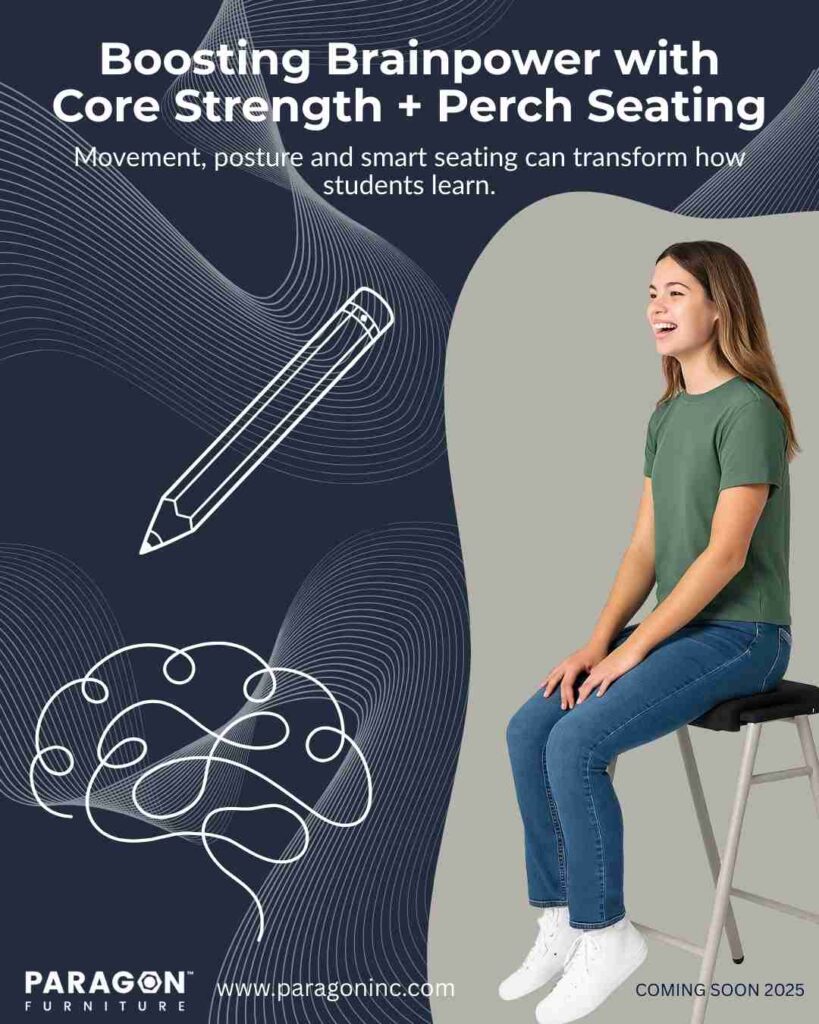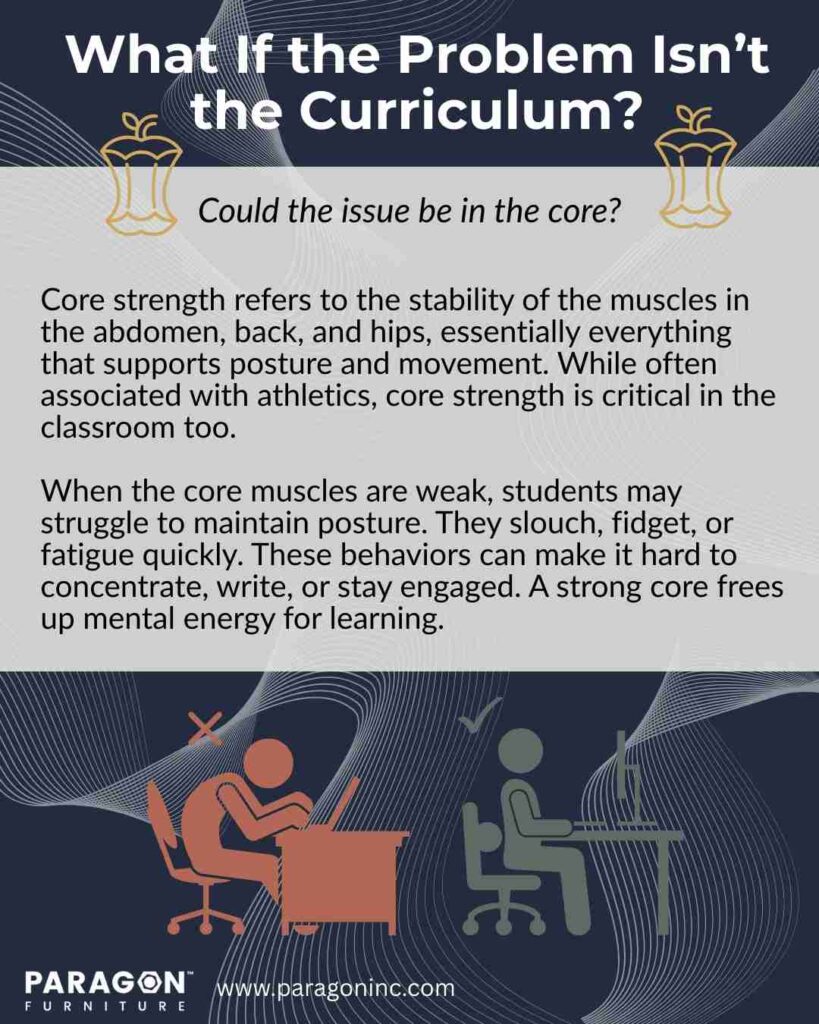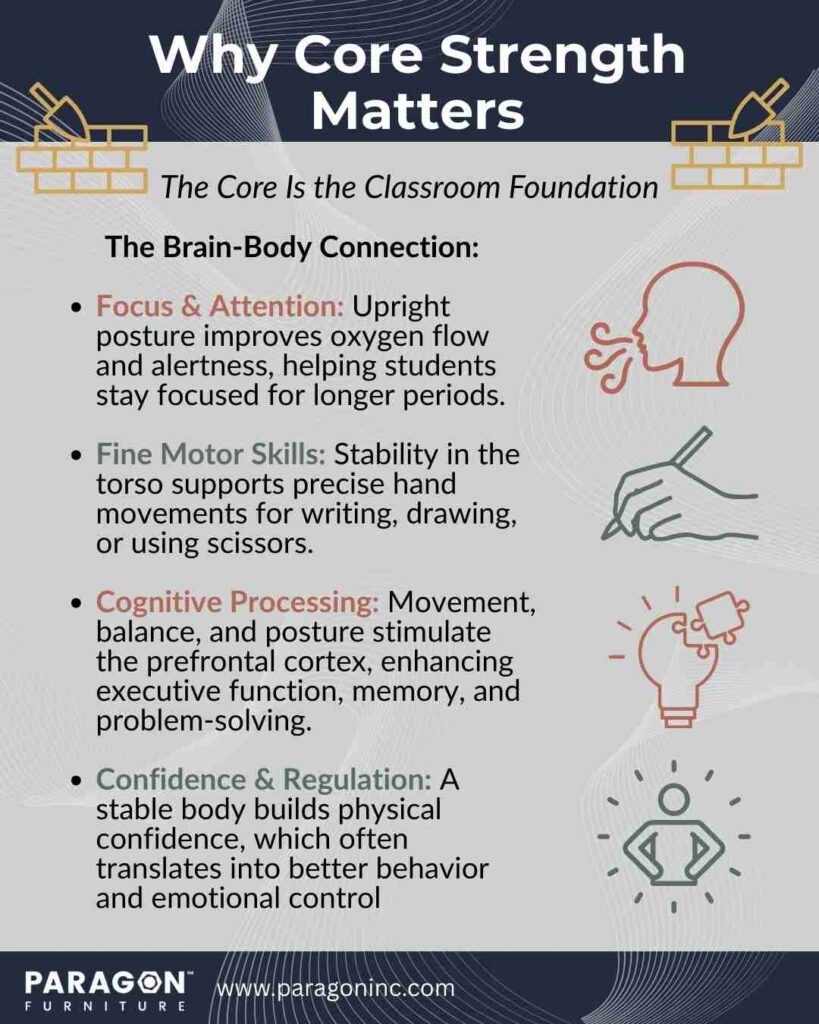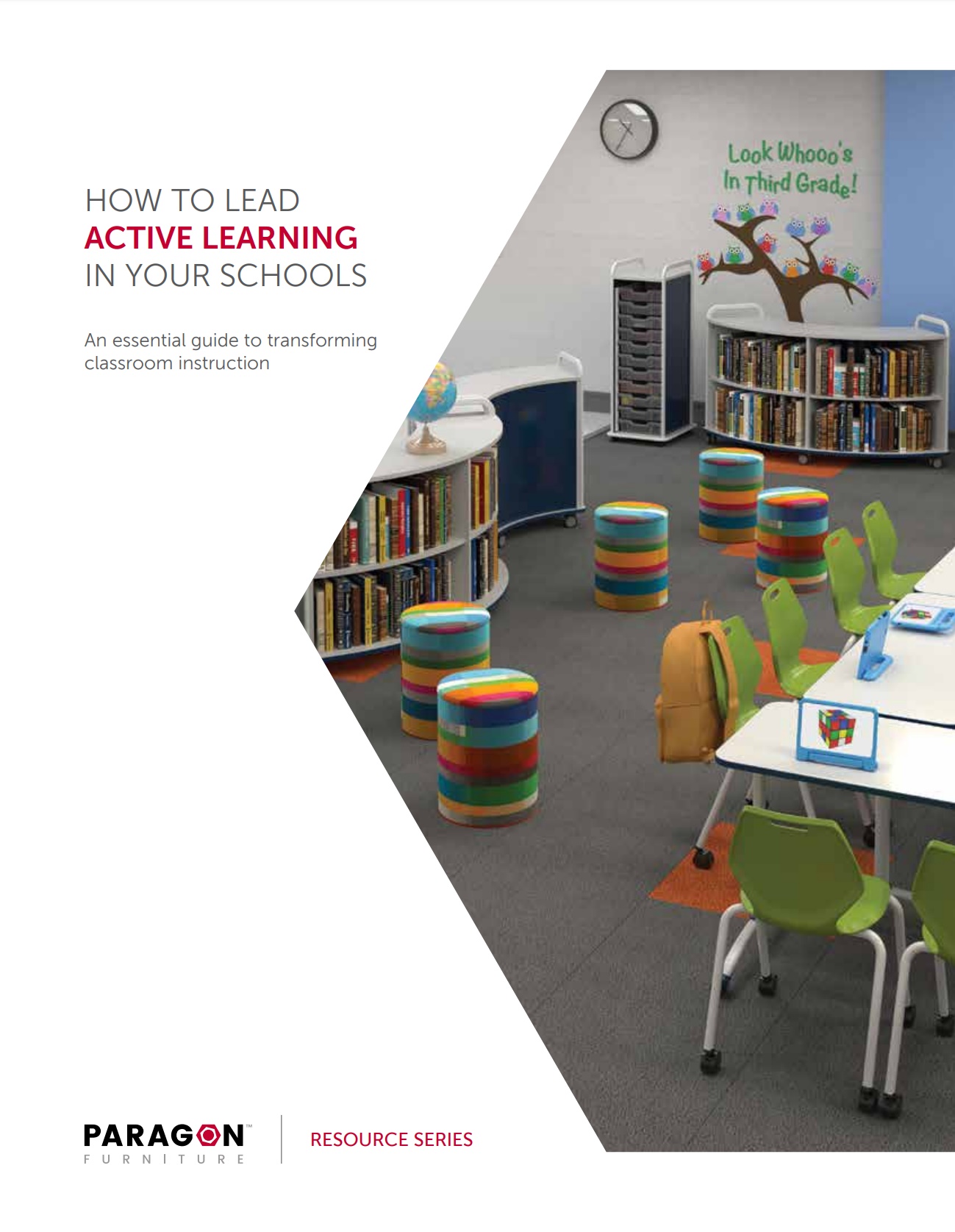boosting brainpower with core strength & perch seating

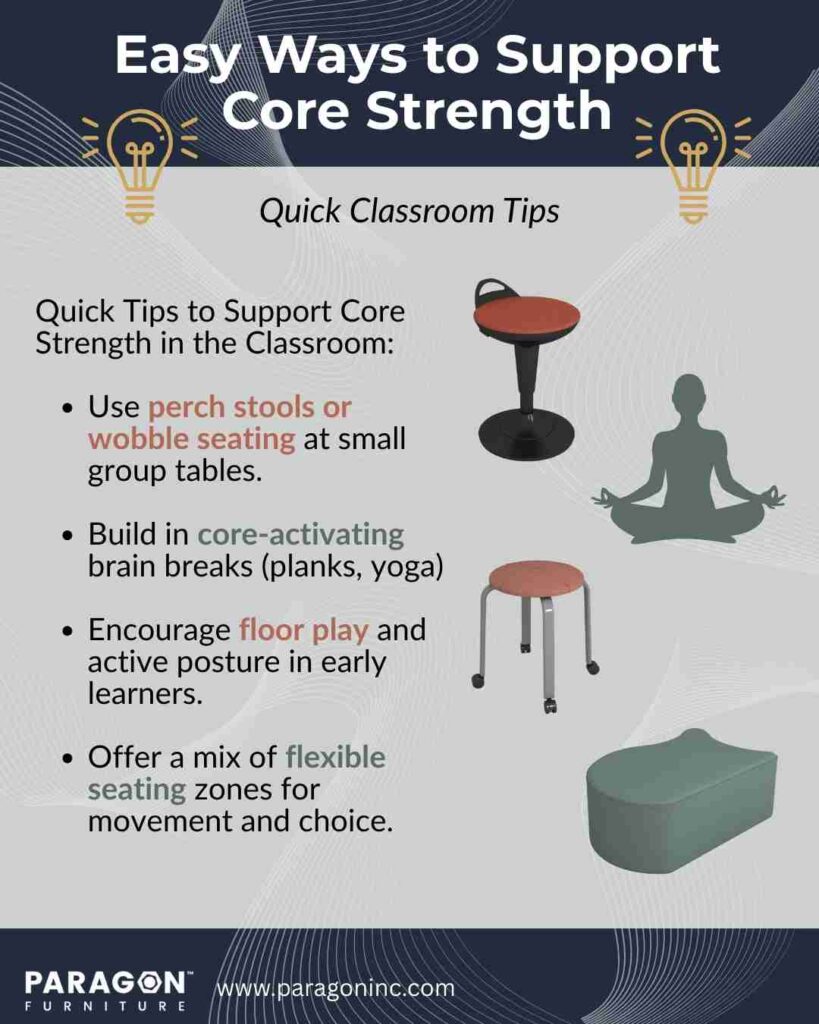
As educators, we spend countless hours developing lesson plans, organizing materials, and shaping our instruction to meet students’ academic needs. But what if part of the learning challenge isn’t in the curriculum—it’s in the core?
More and more research is showing a powerful connection between core strength and cognitive performance. From posture and balance to attention and memory, how a child sits and engages their body can influence how effectively they learn. And one simple classroom solution? Perch seating.
WHAT IS CORE STRENGTH, AND WHY DOES IT MATTER?
Core strength isn’t solely about abs—it’s the coordinated stability from abdominal, back, hip, and shoulder muscles that support posture and movement. This stability is foundational—children with strong cores can maintain upright posture, coordinate fine motor actions, and engage more fully in learning tasks. Core stability typically precedes refined limb control, making it a cornerstone of physical and cognitive development.
Simple, play-based activities—like animal walks, yoga, or playground games—not only enhance core stability but also accelerate cognitive and emotional development by reducing fatigue and improving attention.
References and Further Reading:
Why Core Strength Matters for Children’s Development and How to Build It | Beaming Health
Enhancing Child Development through Core Strength and Reflex Integrati – EverydayEducate
THE BRAIN-BODY CONNECTION
Research ties physical activity to tangible cognitive benefits: increased alertness, better memory retention, longer attention spans, and boosted executive functions. Movement enriches blood flow, stimulates synaptic activity, and in some cases, supports the growth of brain cells, particularly in regions tied to learning.
Termed “cognitive candy” by Medina (2014), even light movement—like shifting in place—can improve attention, reading, math performance, and overall classroom engagement.
One recent (2025) study reported that when children extend their focus—what’s been termed “mental muscle”—their overall test performance, even in unrelated subjects (like math or reading), improves.
Embodied Cognition:
This theory posits that thinking and learning are shaped by bodily interactions with the environment. That means physical posture and movement are more than just context—they actively influence cognitive processing and knowledge acquisition.
References and Further Reading:
Can learning be enhanced with active seating? – ScienceDirect
Boosting mental muscle leads to better performance | Cornell Chronicle
WHAT IS PERCH SEATING?
Perch seating (stools without backrests, often angled) encourages subtle core activation and micro-adjustments. These micro-movements increase proprioceptive input, helping maintain posture without conscious effort, thus enhancing concentration and reducing fatigue.
In contrast to static chairs, dynamic seating such as wobble stools or perch seating supports natural movement and aligns with embodied cognition principles to keep bodies—and minds—engaged.
CLASSROOM BENEFITS OF PERCH SEATING (AND FLEXIBLE SEATING)
Flexible and dynamic seating (including perch utensils, beanbags, mobile desks) has demonstrated strong benefits:
Supports self-regulation and autonomy by offering students control over their learning environment.
Encourages engagement and motivation in students, especially those with attention challenges
- Even static classroom layouts, when altered to clustered or circular formats, improve peer interaction, collaboration, and academic engagement.
References and Further Reading:
QUICK TIPS TO SUPPORT CORE STRENGTH IN THE CLASSROOM
- Movement-rich brain breaks: Integrate core strength activities like planks, animal walks, or yoga. These reduce restlessness and boost attention.
- Flexible seating: Combine perch stools, wobble chairs, and floor areas to offer students choice and movement.
- Seating variety: Transition between traditional rows (for focus-intensive tasks) and flexible clusters (for collaboration), tailoring layout to lesson goals.
- Movement-integrated lessons: Pair learning tasks with movement—e.g., use gestures in math, ask kids to draw concepts or act them out—to reinforce retention.
References and Further Reading:
To improve America’s school kids, we need to get them moving
Download our step-by-step implementation guide to help create active learning spaces!
CLASSROOM DESIGN FILES
Access all of the design resources you need to create a beautiful classroom!

